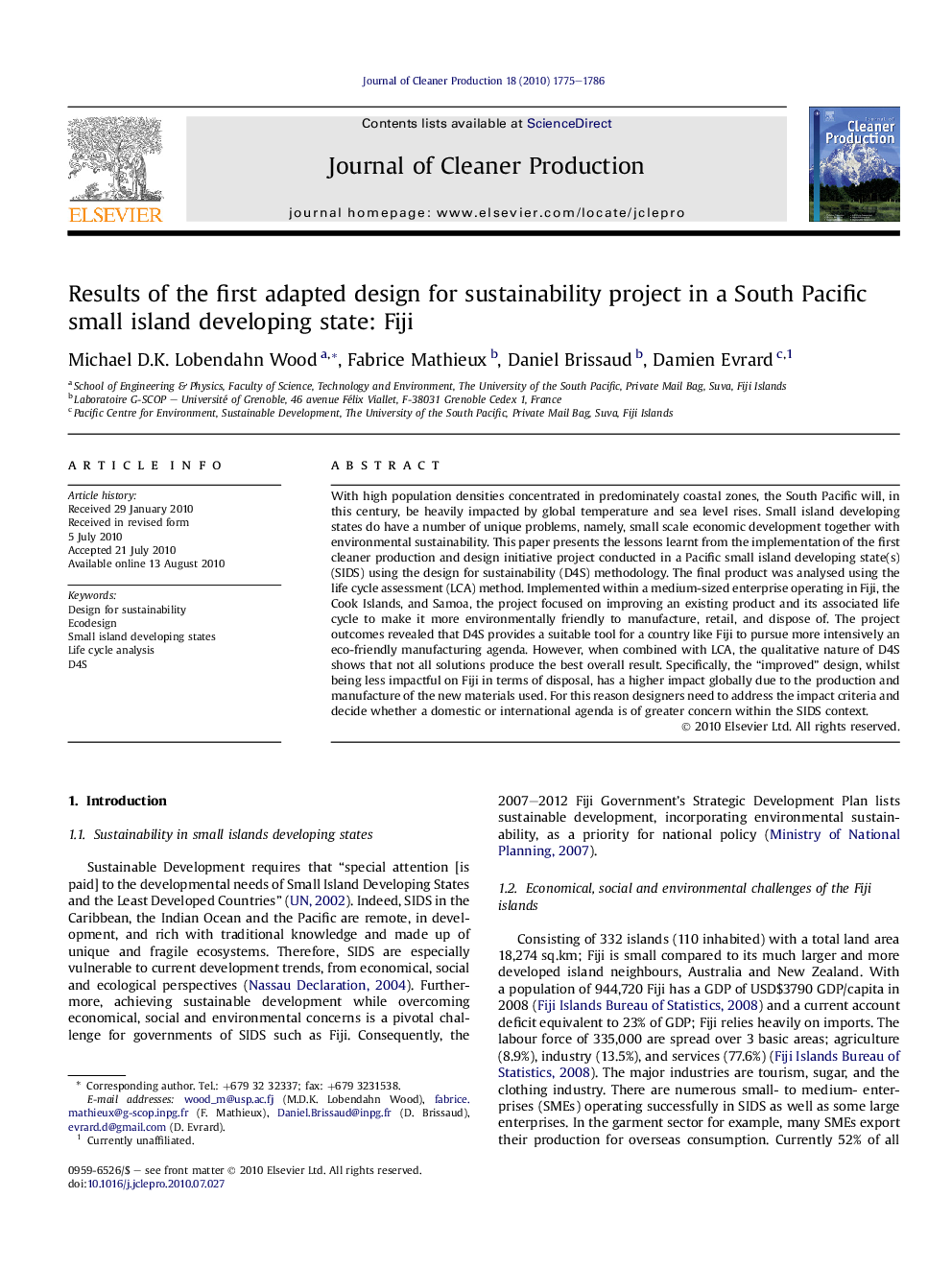| Article ID | Journal | Published Year | Pages | File Type |
|---|---|---|---|---|
| 1746112 | Journal of Cleaner Production | 2010 | 12 Pages |
With high population densities concentrated in predominately coastal zones, the South Pacific will, in this century, be heavily impacted by global temperature and sea level rises. Small island developing states do have a number of unique problems, namely, small scale economic development together with environmental sustainability. This paper presents the lessons learnt from the implementation of the first cleaner production and design initiative project conducted in a Pacific small island developing state(s) (SIDS) using the design for sustainability (D4S) methodology. The final product was analysed using the life cycle assessment (LCA) method. Implemented within a medium-sized enterprise operating in Fiji, the Cook Islands, and Samoa, the project focused on improving an existing product and its associated life cycle to make it more environmentally friendly to manufacture, retail, and dispose of. The project outcomes revealed that D4S provides a suitable tool for a country like Fiji to pursue more intensively an eco-friendly manufacturing agenda. However, when combined with LCA, the qualitative nature of D4S shows that not all solutions produce the best overall result. Specifically, the “improved” design, whilst being less impactful on Fiji in terms of disposal, has a higher impact globally due to the production and manufacture of the new materials used. For this reason designers need to address the impact criteria and decide whether a domestic or international agenda is of greater concern within the SIDS context.
